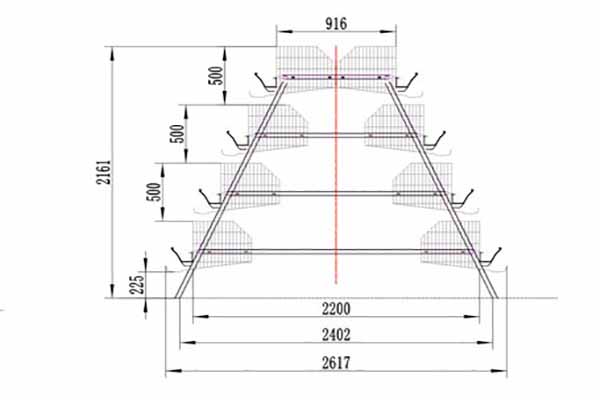Automatic Feeding System for 60,000 Chickens in Kenya: A Game Changer for Poultry Farms
The poultry industry in Kenya has been experiencing significant growth, with more and more farmers looking to increase their flock sizes. One of the key components to efficient poultry farming is the implementation of an automatic feeding system. In this article, we will explore the benefits of an automatic feeding system for 60,000 chickens in Kenya and how it can revolutionize the way poultry farms operate.
The Need for an Automatic Feeding System
As the number of chickens on a farm increases, so does the need for a more efficient feeding system. Manual feeding can be time-consuming and labor-intensive, leading to potential inefficiencies and increased costs. An automatic feeding system addresses these issues by providing a consistent and precise feeding schedule, ensuring that each chicken receives the right amount of feed at the right time.
Benefits of an Automatic Feeding System for 60,000 Chickens
1. Consistency: An automatic feeding system ensures that chickens receive a consistent diet, which is crucial for their growth and health.
2. Time Efficiency: By automating the feeding process, farmers can save a significant amount of time, which can be allocated to other farm activities.
3. Cost Reduction: An automatic feeding system can reduce labor costs and minimize the risk of feed waste, leading to lower operational expenses.
4. Health Monitoring: Some advanced systems can monitor the health and consumption patterns of the chickens, enabling early detection of any issues.
5. Scalability: As the farm grows, an automatic feeding system can easily scale up to accommodate more chickens without requiring additional labor.
Implementing an Automatic Feeding System in Kenya
Kenya has a diverse range of poultry farms, from small-scale operations to large commercial farms. Implementing an automatic feeding system requires careful planning and consideration of the following factors:
1. Farm Size and Layout: The system should be designed to fit the specific layout and size of the farm.
2. Feed Type and Storage: The system should be compatible with the type of feed used and have adequate storage capacity.
3. Power Supply: Ensure a reliable power source is available to run the feeding system.
4. Maintenance and Support: Choose a system that comes with comprehensive maintenance and support services.
Livi Machinery: Your Partner in Poultry Farming
At Livi Machinery, we specialize in providing high-quality and reliable poultry farming equipment, including automatic feeding systems. Our systems are designed to meet the specific needs of Kenyan poultry farms, ensuring efficiency and cost-effectiveness.
Contact us today to learn more about our automatic feeding systems and how they can help your farm thrive. Let’s work together to revolutionize the poultry industry in Kenya.

